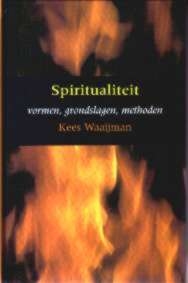
|
Posted November 5, 2004
Book: Spirituality: Forms, Foundations, Methods Author: Kees Waaijaman Peeters, Bondgenotenlaan, Leuven, pp. 968 An Excerpt from the Jacket:
An Excerpt from the Book: Bernard of Clairvaux In times of radical change God’s will is no longer visible in the external order. Under these circumstances people ask for signs of God’s presence. The time in which Bernard of Clairvaux lived was such a time of crisis. Religion and society, tightly intertwined up until then, underwent profound developments triggered by the rise of the cities, population growth, the founding of new orders and new forms of piety. Bernard was convinced that God wants to communicate himself to human beings and to lead them ever more deeply into himself. To this end it is necessary for humans to seek God and to desire to know his will. That is not difficult because what is at stake is the obviously good and the obviously evil. Things are more difficult in the area between. There God’s will has to be discovered. “With this in mind, Bernard designed a clear procedure: people have a duty not to decide as long as their judgement concerning the will of God remains uncertain and in suspension. In this uncertain state people must keep themselves in balance. Openness to both possibilities, however, can only be maintained by those who do not hastily settle on one of the two possibilities. One must remember, advises Bernard, ‘that God could take more pleasure in the opposite choice.” The basic condition is the willingness to follow God’s will the moment one senses in what direction it tends. The clearly perceived will of God must, finally, be carried out without hesitation.” The correct choice can be tested by criteria which Bernard develops especially in his sermon on the Song of Songs: the visit of the Bridegroom influence the soul of love for the truth: it is accompanied by the spiritual fruits of righteousness, peace, and joy; one has a deep sense of consolation; life is inwardly renewed; the desire for the Bridegroom is enhanced; one’s knowledge is deepened and — mot importantly — produces love.” Table of Contents Part I: Forms of Spirituality Within the area of lived spirituality we can distinguish three basic forms: lay spirituality, which is realized in the context of the family; schools of spirituality, which manifest themselves in the public domain; counter-movements, which occur outside of the cultural and religious consensus. 1. Lay spiritual 2. Schools of spirituality 3. Countermovements Part II: Foundational Research The core question is, What in fact is spirituality? We will attempt to give an answer to this question from two perspectives: from within lived spirituality and from within the discipline of spirituality. Our study leads to the following conclusion: Materially, spirituality is the jointed process of the divine-human relation which is, formally, a layered process of transformation. The methodology used is developed on the basis of this definition. Here, too, lived spirituality makes its own contribution. 1. Spirituality understood in the light of its praxis 2. Spirituality viewed in the light of its science 3. Divine-human transformation – the object of research 4. Discernment – a blueprint for the method 5. Design for the discipline of spirituality Part III: Methods of Spirituality Research From the foundational research we acquire the main lines of method for our study of spirituality: the description of spiritual forms and configurations; the interpretation of spiritual texts; systematic reflection on spiritual topics; clarification of spiritual processes of transformation. 1. Form-descriptive research 2. Hermeneutic research 3. Systematic research 4. Mystogogic research |
|
